Manufacturing high-precision silicone components can be challenging without the right cutting method. Traditional cutting techniques often fail to maintain clean edges or precise dimensions, leading to wasted material and inconsistent product quality. This is where silicone die cutting becomes essential.
Silicone die cutting is a precise, efficient method for shaping silicone sheets, films, and foams into custom parts. It ensures uniformity, high repeatability, and smooth edges, making it the preferred cutting solution for industries like medical, automotive, and electronics.
Understanding how this process works and why it’s beneficial can help businesses optimize production and improve product quality. Let’s explore silicone die cutting in detail.
What Is Silicone Die Cutting?
Silicone die cutting is a manufacturing process that uses a custom-shaped die (a specialized cutting tool) to stamp out parts from silicone sheets, films, or foams. The die is pressed onto the material with force, cutting precise shapes quickly and consistently.
This process is widely used to produce:
- Silicone gaskets and seals
- Custom silicone pads and insulation
- Medical-grade silicone components
- Automotive vibration dampening parts
- Adhesive-backed silicone tapes
Silicone die cutting is ideal for high-volume production, ensuring each piece meets strict design specifications without excessive waste.
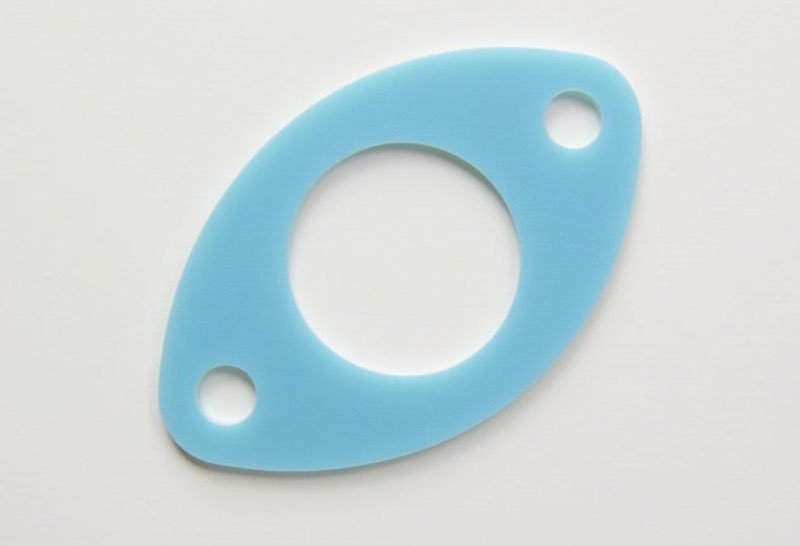
How Does Silicone Die Cutting Work?
The die-cutting process involves several key steps:
1. Material Selection
The first step is choosing the right type of silicone material, such as:
- Solid silicone sheets for durable seals and gaskets
- Silicone foam for cushioning and insulation
- Silicone-coated fabrics for heat and chemical resistance
2. Die Design and Preparation
A custom cutting die is created to match the required part dimensions. Dies can be made from:
- Steel rule dies (for simple cuts)
- Rotary dies (for high-speed precision cutting)
- Laser-cut dies (for intricate designs)
3. Cutting Process
The silicone sheet is placed on a cutting surface, and the die is pressed onto it with controlled force, slicing the material cleanly. This can be done using:
- Flatbed die cutting (for thick materials)
- Rotary die cutting (for high-speed continuous cutting)
4. Finishing and Quality Inspection
After cutting, the parts are inspected for precision, edge quality, and dimensional accuracy. Some products may go through:
- Deburring (to smooth edges)
- Adhesive backing application (for peel-and-stick functionality)
The result is uniform, high-quality silicone parts ready for use in various applications.
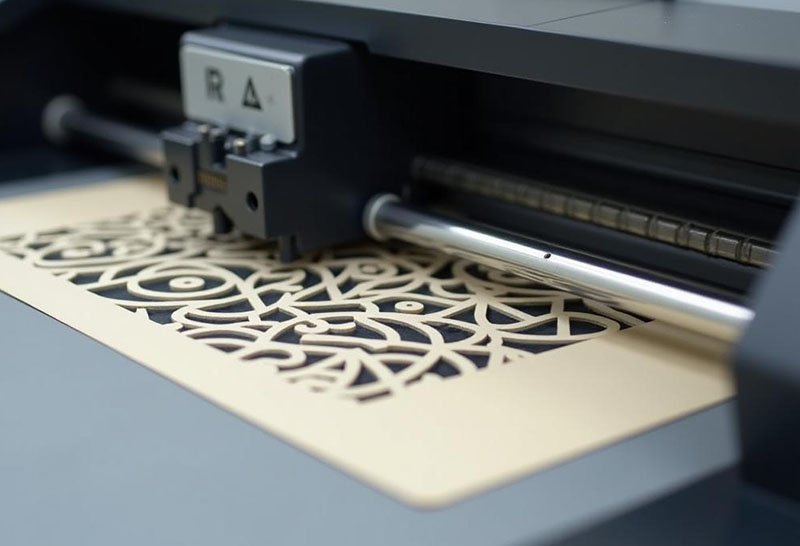
Benefits of Silicone Die Cutting
Silicone die cutting offers several advantages over traditional cutting methods like hand-cutting or laser cutting.
1. High Precision and Consistency
Die cutting ensures exact replication of each part, maintaining tight tolerances. This is essential for industries that require accurate seals and gaskets.
2. Fast and Scalable Production
Compared to manual cutting, die cutting dramatically increases production speed. Once the die is set up, thousands of parts can be cut in a short time.
3. Clean, Smooth Edges
Other cutting methods, such as laser cutting, can leave burnt edges on silicone. Die cutting produces clean cuts without charring or deformation.
4. Cost-Effective for Large Runs
Die cutting is more economical for high-volume production because it minimizes waste and speeds up processing.
5. Works with Various Silicone Types
Whether working with solid silicone, sponge silicone, or silicone foams, die cutting adapts to different material densities and thicknesses.
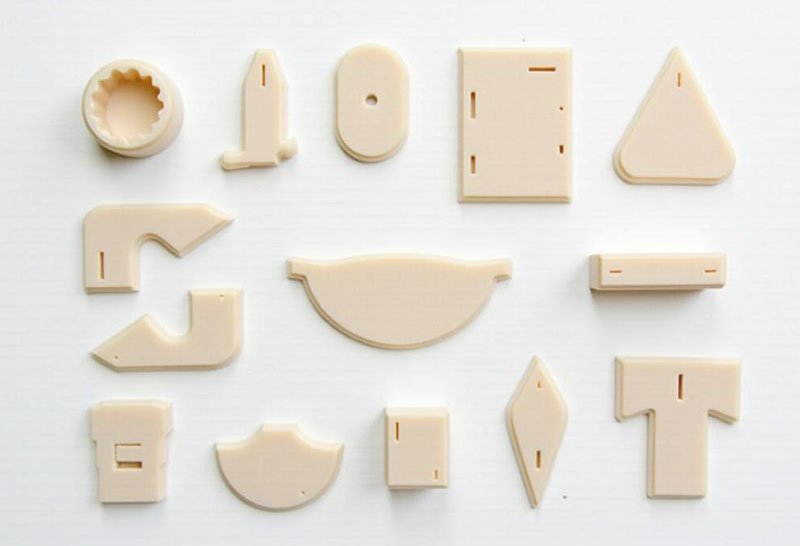
Industries That Use Silicone Die Cutting
1. Automotive Industry
- Silicone gaskets for engines and transmissions
- Heat-resistant seals for high-temperature components
- Vibration-dampening pads to reduce noise and wear
2. Medical Industry
- Medical-grade silicone seals for sterilized environments
- Silicone adhesives and tapes for wound care
- Custom-cut surgical components for medical devices
3. Electronics Industry
- Silicone thermal pads for heat dissipation in circuits
- Dielectric silicone films for insulation
- Custom-cut EMI shielding gaskets for electromagnetic protection
4. Aerospace Industry
- Lightweight silicone seals for aircraft panels
- Temperature-resistant insulation layers
- Die-cut silicone components for fuel and hydraulic systems
5. Industrial Manufacturing
- Food-grade silicone seals for processing equipment
- Chemical-resistant gaskets for industrial machinery
- Custom-molded silicone parts for specialized equipment
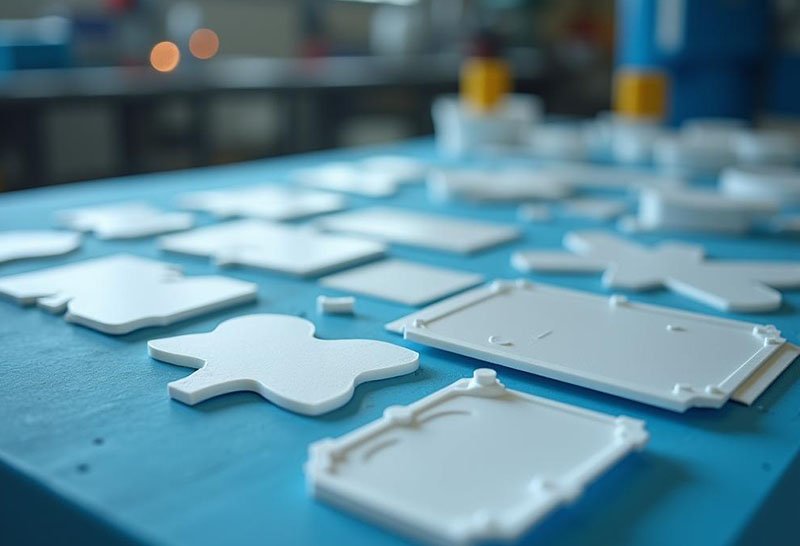
Types of Die Cutting for Silicone
Different die-cutting methods are used depending on the material thickness, precision requirements, and production scale.
1. Flatbed Die Cutting
- Uses a steel rule die pressed onto a flat surface
- Best for thicker silicone sheets and low- to medium-volume production
- Used for gaskets, thick pads, and industrial seals
2. Rotary Die Cutting
- Uses a cylindrical die for continuous cutting
- Ideal for high-speed production of thin silicone sheets
- Used for adhesive-backed silicone films, tapes, and medical patches
3. Laser Die Cutting
- Uses a computer-guided laser to cut intricate designs
- Best for low-volume, high-precision applications
- Can create custom perforations and complex shapes
4. Kiss Cutting
- Partially cuts through silicone sheets with adhesive backing
- Leaves the backing layer intact for easy peel-and-stick applications
- Used for medical tapes, gaskets, and custom silicone stickers
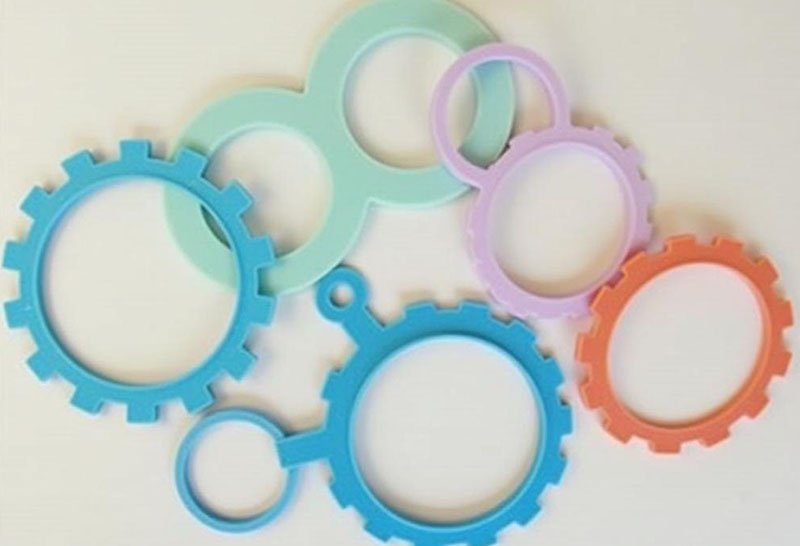
How to Choose the Right Silicone for Die Cutting
Selecting the right silicone material is crucial for achieving the desired performance and durability.
| Material | Best For | Key Properties |
|---|---|---|
| Solid Silicone Sheets | Gaskets, Seals | Heat-resistant, durable |
| Silicone Foam | Cushioning, Insulation | Lightweight, flexible |
| Medical-Grade Silicone | Medical Tapes, Seals | FDA-approved, biocompatible |
| Silicone-Coated Fabrics | Heat Shields, Insulation | Chemical and heat-resistant |
| Adhesive-Backed Silicone | Peel-and-Stick Gaskets | Easy application, strong adhesion |
Common Mistakes to Avoid in Silicone Die Cutting
Even with advanced die-cutting techniques, certain mistakes can reduce quality and efficiency.
❌ Using the Wrong Die Type – A steel rule die might work for thick sheets, but rotary dies are better for thin films.
❌ Overlooking Adhesive Compatibility – Not all adhesives stick well to silicone; choosing the wrong backing can lead to peeling.
❌ Inaccurate Material Thickness Measurements – Variations in silicone thickness can result in uneven cuts.
❌ Neglecting Edge Finishing – Some applications require additional smoothing to prevent silicone fragments.
Conclusion
Silicone die cutting is an essential process for producing precision silicone components used in various industries. With its high accuracy, speed, and material efficiency, it remains the preferred choice for manufacturing gaskets, seals, and custom silicone parts.
At Ruiyang Silicone, we offer custom die-cut silicone solutions tailored to your business needs. Whether you need industrial seals, medical-grade silicone, or adhesive-backed components, we ensure top-quality production.
Looking for high-performance die-cut silicone parts? Contact us today for expert assistance.